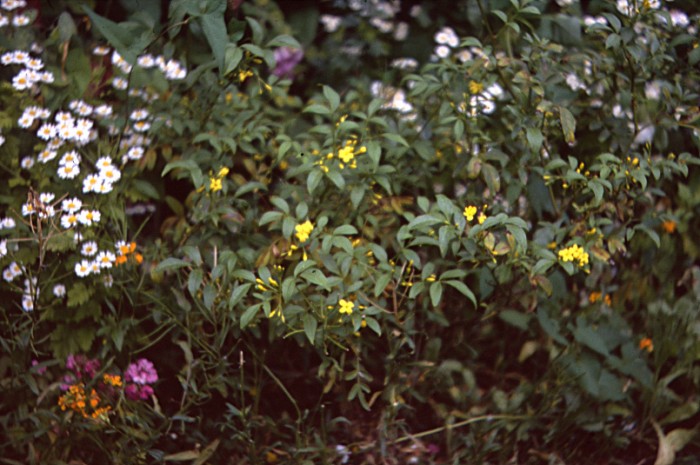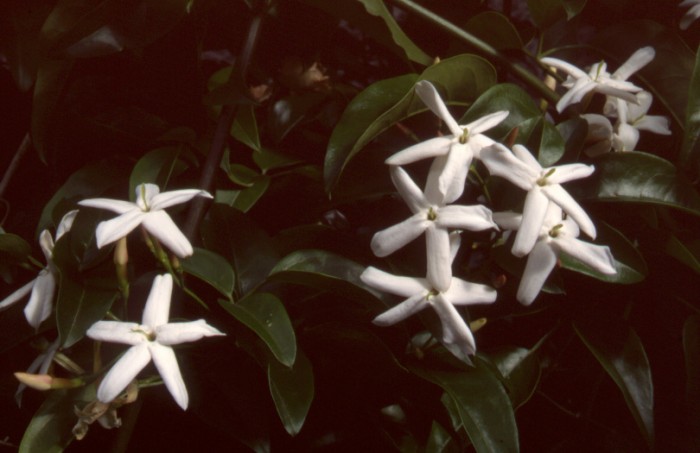A delight with any greenhouse or conservatory is to have the air full of that most delicious perfume Jasmine. Also known as (Sweet) Jessamine. Or rather perfumes for there are dozens of species and varieties, some hardy and many others that really need to be under glass.

The hardier ones prefer to ramble and given time and something to clamber over cover quite large areas, flowering profusely if warm enough. There has been much confusion as to their tenderness as names were often applied loosely and as convenient.
Anyway many non-hardy Jasmines much resemble hardy Jasmines thus the confusion. But from our point of view it does not matter as most of the hardier Jasmines can be confined in tubs and grown up canes and are then compact enough to be kept under cover where their fragrance is delightfully concentrated. These, like their actually more tender cousins, do not want it hot but merely frost free, and a drier rather than a humid atmosphere. As to compost most Jasmines are quite amenable and not at all difficult and when they inevitably get too big they can be hacked back hard and soon recover.

The most widely seen is the hardy beautifully scented Common White, Jasminum officinale, introduced from somewhere near the Himalayas in the first half of the sixteenth century. Happiest on a large sunny wall this flowers prolifically even in a small pot, the better variety of this Affine has larger blooms.
As this was once known as Grandiflorum so it was obviously confused with J. grandiflorum which is actually a tender species only suited for our greenhouse. And the delightful J. polyanthum most closely resembles and is closely related to J. officinale but is itself rather tender.
And it matters not a jot which is which as all have such wonderful perfumes, just get every one you can. Apart from these there are many choice, and widely flung species, well suited to the cold greenhouse or conservatory such as Jasminum angulare from S. Africa, azoricum from Madeira, floridum from China, even an Australian, suavissimum.
Oddly despite this host of species there is only one known hybrid, J. x stephanense a hardy cross between the carmine flowered hardy J. beesianum and J. officinale. This has prolific pink flowers and gloriously yellow variegated young foliage, and flowered for me from seed in only a few years.
Most Jasmines though are white flowered climbers but several species are shrubby such as the common Winter Jasmine J. nudiflorum. Oddly these shrubby ones almost all have yellow flowers. J. humile Revolutum is one, a hardy evergreen, an excellent subject for a tub in a cold greenhouse with beautiful foliage and large yellow flowers this ought to be more widely known, though even this had a tender perhaps less attractive counterpart J. subhumile.
How confusing can you get?










